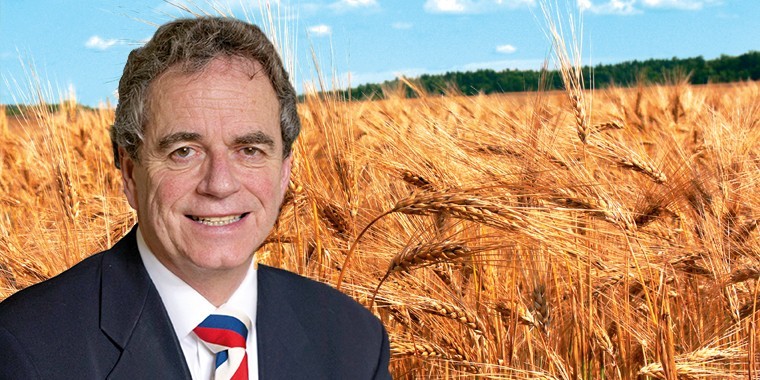We are living and working in unprecedented and dangerous times; one minute you are worrying about the quality of malting barley being loaded on a boat; the next you are wondering if you will still be alive in two week’s’ time! I think our attitudes to work, life and death will change because of this.
The now-completed sowing of spring barley in the south has helped with the illusion that life is going on as normal. That brings me to my specialist subject, malting barley. We now have the makings of a decent malting barley crop for 2020, especially where the barley was planted in the first half of March. It’s up, and with good rain last week it’s at the three leaf stage and looks well.
Late-sown barley has more to do to catch up; much depends on the land type, but this is perhaps the barley where it is better to add more nitrogen than usual for malting, and grow for yield, as feed. The sudden drop in demand for beer means that harvest 2020 could be the worst potential market for malting barley that we have ever seen. Old crop has led the way here, with UK maltsters selling back about 35,000 mt of malting barley they cannot use before harvest. This now has to be exported or used as feed.
Some national governments consider brewing beer as non-essential – the obverse of flour milling. So with a carry over of malt and malting barley, new crop malting barley has little or no premium. Of course we still need good growing conditions from here on to get the crop, but with the largest world brewers reducing production by 50% (to match falling demand), micro craft brewers being down 75% and even distillers down 25%, the outlook for alcohol consumption, before any easing of the lockdown, is very bad.
The differential between new crop feed wheat and feed barley is as great as I have ever seen. Logically it should narrow – with hopefully barley improving – but these are not logical, predictable times. So given that the UK wheat price will be dictated by the cost of importing after harvest, there will be days when that price increases – and hopefully feed barley will improve on the back of that, even for a short time. If so, that’s when fixing a feed base for malting should be done. You may never see an actual malting premium. The UK could have from two to three million tonnes of barley surplus; malting exports may be more difficult than feed, because of the 31 December Brexit deadline still being in place. On that point it’s difficult to believe the Government would heap more misery on the economy by sticking to a no deal ‘crash out’ at the end of the year, but you never know. I hope we will have another extension.
On old crop we have been able to carry on exporting malting barley to all parts of the EU over the past six weeks, but that will end shortly. It is so good to see the UK primary food chain working so well – as other industries flounder – with our farmer members, central stores, hauliers, grain elevators and ships all working as normal, despite the difficulties and risks.
Supermarkets may be short of flour and yeast, but flour mills have plenty. Millers have been producing twice as much in the past month, but the problem is filling enough of the 1.5 kg bags demanded by the supermarkets and public. So we may have to start lugging flour home in 15 kgs bags to keep the supply coming. So In summary, there is plenty of old crop wheat to see us through to harvest and too much barley.
Sterling is back to its pre-lock down exchange value against the Euro of 87/88 pence. Oilseed rape has recovered most of its £25 slump in February, and while the crops in flower are in most cases as poor as anticipated, reduced world demand for edible oils and Australian canola on the water heading for the UK makes me think it is time to sell some more old crop. You may consider that with May 2021 wheat futures being £20 over May 2020, it may be worth carrying that over instead.
In Winston Churchill’s book The Great War, he listed life maxims including “first things first”, “being well before well being”, “what you do, do well” and ”always be strongest at the point of attack”. He added: “Good reasons can be given not only for either course but also for the compromises which ruin them”, adding: “But the path to safety nearly always lies in rejecting the compromises”. With hindsight this could be applied to the actions in the critical early days of our pandemic, when, because of compromises, crowds of 60,000 were allowed to attend Cheltenham races – when ‘herd immunity’ seemed like a good idea!




